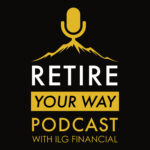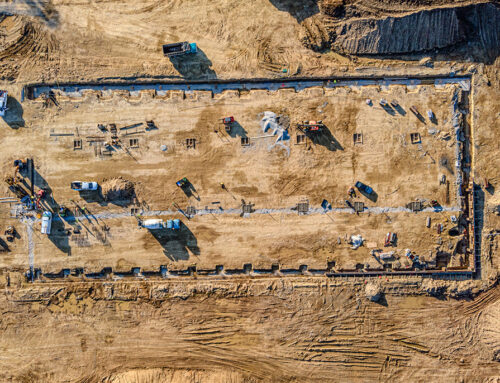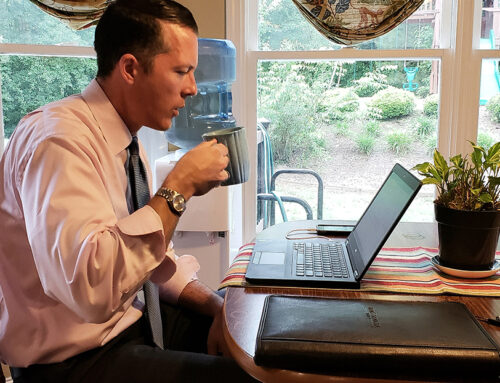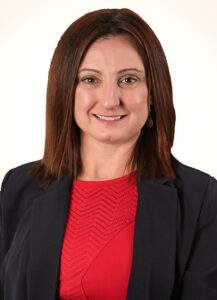 A five-step guide to build a stable source of income and long-term growth
A five-step guide to build a stable source of income and long-term growth
Generational wealth is the idea of building wealth that can last for several generations, allowing you to create a legacy for your family and provide financial security for future generations. One of the most effective ways to build this type of wealth can be through investing in hard assets that hold their value – and offer long-term growth potential.
Hard assets are physical, tangible assets that are not easily affected by market fluctuations and have a proven track record of holding their value over time. These assets can include real estate, precious metals, and collectibles, and can offer a stable source of income and long-term growth opportunity.
Here is a Five-Step Guide on how to begin building generational wealth with hard assets.
Step 1: Determine Your Investment Goals
The first step in building wealth with hard assets is to determine your investment goals. This means considering your financial situation, including your income, expenses, and future plans, and determining how much you can afford to invest.
Once you have a clear understanding of your financial situation, you can set your investment goals and determine how much of your portfolio should be allocated to hard assets. This will help you make informed investment decisions and stay on track as you work to build your wealth.
Step 2: Research Your Options
The next step in building wealth with hard assets is to research your options. There are several different types of hard assets to choose from, including real estate (including residential and commercial), precious metals, and collectibles (which are many).
Real estate is a popular choice for building wealth, as it offers the potential for both appreciation and rental income. Precious metals, such as gold and silver, can be a hedge against inflation and can provide a stable source of income over time. Collectibles, such as fine art and rare coins, can also provide long-term growth, but require a greater level of knowledge and understanding of the market.
When researching your options, it is important to consider the risks and benefits of each type of hard asset and determine which one aligns best with your investment goals.
Step 3: Make a Plan
Once you have determined your investment goals and researched your options, it is time to make a plan. This will include setting a budget for your investments, determining how much of your portfolio you want to allocate to each type of hard asset, and creating a timeline for your investments.
It is also important to create a plan for managing your hard assets, including a strategy for monitoring their value and making adjustments as needed.
This will help you stay on track and ensure that your investments are working to build your wealth over time.
Step 4: Diversify Your Portfolio
Diversification is an important component of building wealth with hard assets. This means investing in a mix of different types of hard assets, as well as other types of investments, such as stocks and bonds.
Diversifying your portfolio will help to mitigate risk and provide a stable source of wealth over time. By investing in a mix of hard assets and other types of investments, you can ensure that your wealth continues to grow and remains stable even in uncertain economic conditions.
Step 5: Stay Committed
The final step in building wealth with hard assets is to stay committed. Building wealth is a long-term process and requires patience and discipline.
It is important to remain focused on your investment goals and avoid making impulsive decisions. This means avoiding the temptation to sell your hard assets during market downturns and sticking to your plan over the long-term.
By following these steps and remaining committed to your investment goals, you can build wealth with hard assets that will last for generations. This can provide you with financial security and allow you to create a legacy for your family that can provide financial stability for years to come.
Copyright © 2023 FMeX. All rights reserved. Distributed by Financial Media Exchange.

















 Megan Jones joined the ILG Financial team in 2020 as marketing director. Megan and her husband live in Fredericksburg, VA with their German Short Haired Pointer, Gus. Megan is a graduate of Longwood University and holds a degree in communications. Megan is the oldest of Dave Lopez’s three children and not only enjoys working alongside her father, but also with her cousin, Chase, who joined the ILG Financial team in 2020 as an advisor. Megan is also a fully licensed Life, Health, and Annuity agent. When not at work, Megan enjoys sitting on the back porch with family and friends enjoying food and music.
Megan Jones joined the ILG Financial team in 2020 as marketing director. Megan and her husband live in Fredericksburg, VA with their German Short Haired Pointer, Gus. Megan is a graduate of Longwood University and holds a degree in communications. Megan is the oldest of Dave Lopez’s three children and not only enjoys working alongside her father, but also with her cousin, Chase, who joined the ILG Financial team in 2020 as an advisor. Megan is also a fully licensed Life, Health, and Annuity agent. When not at work, Megan enjoys sitting on the back porch with family and friends enjoying food and music. Chase Lopez joined the ILG Financial team in 2020 as an advisor. Chase is a 2016 James Madison University graduate with a degree in management. Chase has been trained under the tutelage of Dave Lopez, who is not only the founder and managing member of ILG Financial, but also is Chase’s uncle and godfather. He also enjoys working alongside his cousin, Megan, who is Dave’s daughter.
Chase Lopez joined the ILG Financial team in 2020 as an advisor. Chase is a 2016 James Madison University graduate with a degree in management. Chase has been trained under the tutelage of Dave Lopez, who is not only the founder and managing member of ILG Financial, but also is Chase’s uncle and godfather. He also enjoys working alongside his cousin, Megan, who is Dave’s daughter. Amy Anderson joined the ILG Financial team in 2023 as the client relations coordinator. Her responsibilities include scheduling of appointments, annual check-up notifications, and annuity and required minimum distribution assistance. She is a graduate of Harding University with a degree in Computer Information Systems. Amy and her husband have two children and she enjoys reading, crocheting, music and spending time with her family.
Amy Anderson joined the ILG Financial team in 2023 as the client relations coordinator. Her responsibilities include scheduling of appointments, annual check-up notifications, and annuity and required minimum distribution assistance. She is a graduate of Harding University with a degree in Computer Information Systems. Amy and her husband have two children and she enjoys reading, crocheting, music and spending time with her family. Jessica Carson joined the ILG Financial team in 2018 as an agent. Jessica and her husband have four children, two dogs, 3 barn cats, 5 chickens, and three parakeets. She indeed loves her children and pets! When not at work, Jessica enjoys playing the piano and cello as well as traveling and spending time outside with her family, hiking, fishing, and boating.
Jessica Carson joined the ILG Financial team in 2018 as an agent. Jessica and her husband have four children, two dogs, 3 barn cats, 5 chickens, and three parakeets. She indeed loves her children and pets! When not at work, Jessica enjoys playing the piano and cello as well as traveling and spending time outside with her family, hiking, fishing, and boating. Terri Center joined the ILG Financial team in 2019 as client services manager. She handles client records, application processing, and gathering information to provide a professional and friendly experience with all of our clients. Terri is a graduate of Oakland University. She is married and has two children. She enjoys hiking, family time, and puzzle challenging video games. She also likes to share her creativity in her canvas paintings and sewing projects.
Terri Center joined the ILG Financial team in 2019 as client services manager. She handles client records, application processing, and gathering information to provide a professional and friendly experience with all of our clients. Terri is a graduate of Oakland University. She is married and has two children. She enjoys hiking, family time, and puzzle challenging video games. She also likes to share her creativity in her canvas paintings and sewing projects.